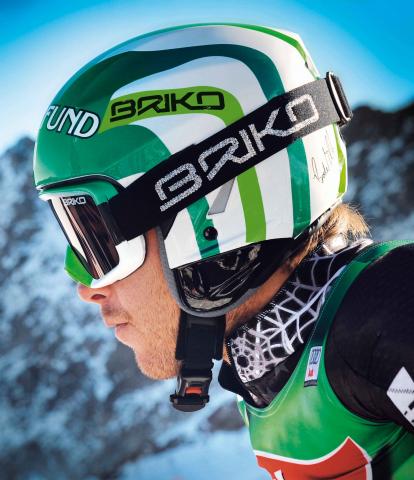
By John Fry
The recent horrifying injury suffered by Formula One racing champion Michael Schumacher -- not in a speeding race car, but when he was skiing between pistes on ungroomed snow in the French Alps -- is a reminder of the not-always fruitful attempts over the years to create equipment aimed at making skiing safer.
Schumacher was wearing a helmet when his head hit a rock. Without it, he would likely have been killed instantly. On the other hand his helmet failed to prevent severe skull damage, and would not have prevented rotational neck or spinal injury.
Notwithstanding the optimism aroused when ski helmet-wearing was adopted by millions of recreational skiers, the incidence of catastrophic head and upper spinal injuries in skiing hasn’t declined. To the contrary, a study last year by the University of Washington has found that the number of snow-sports-related head injuries among youths and adolescents increased 250 percent from 1996 to 2010.
Perhaps, we shouldn’t be surprised.
In the 1960s, when football introduced an improved helmet/mask, while it did lessen skull injury, it encouraged players to become more aggressive, and to use their heads as a primary contact point in blocking and tackling. The number of catastrophic neck injuries in football increased.
Ski helmet use has tripled in the last ten years. It has also coincided with rise of high-risk skiing – cliff-jumping, aerial stunts – celebrated in ski films and in the pages of ski and snowboard magazines, and imitated by young males lacking skill and experience. Wearing a ski helmet made such extreme skiing seem safer, just as better helmets encouraged more aggressive head use in football.
Over the years, one technological improvement in ski equipment has occasionally canceled out the safety of another.
Between 1970 and 1985, tibia fractures among skiers fell by 86 percent as a result of the improvement in release bindings. But when boots became higher and more rigid, the injury merely moved up the leg, with a dramatic increase in ACL tears and knee injury.
Then came a higher binding platform, raising the skier’s boot higher off the snow to increase edging power. That was good. But the power could work in reverse. The feedback from the snow, coupled with the more exaggerated sidecut of the shaped ski, increased the chance of knee injury. The late Toni Sailer, 1956 Olympic triple gold medalist and the chairman of the FIS Alpine Committee, once warned that modern boot and ski design was destroying the knees of a whole generation of young racers.
“The equipment we have now allows us to do things we really couldn’t do before,” extreme skiing pro Chris Davenport recently told the New York Times. “People’s pushing limits has surpassed people’s ability to control themselves.”
“There’s this energy drink culture now, a high-level, high-risk culture, that’s being marketed and is impacting the way people ski,” Robb Gaffney, a sports psychiatrist, told reporter Kelley McMillan. “That’s what people see, and that’s what people think skiing is.”
It is a culture much embraced by the ski industry, and propagated in magazines and dozens of new ski flicks each year. A new film, The Crash Reel, which ISHA will honor at its annual awards ceremony in Park City, April 3rd, opposes the premise of the typical ski flick. It suggests that the industry should re-evaluate its present manner of imaging snow sports as stunt-filled and suffused with risk-taking. It’s hard to disagree.
Also see: Ski Helmets: How We Got Here
